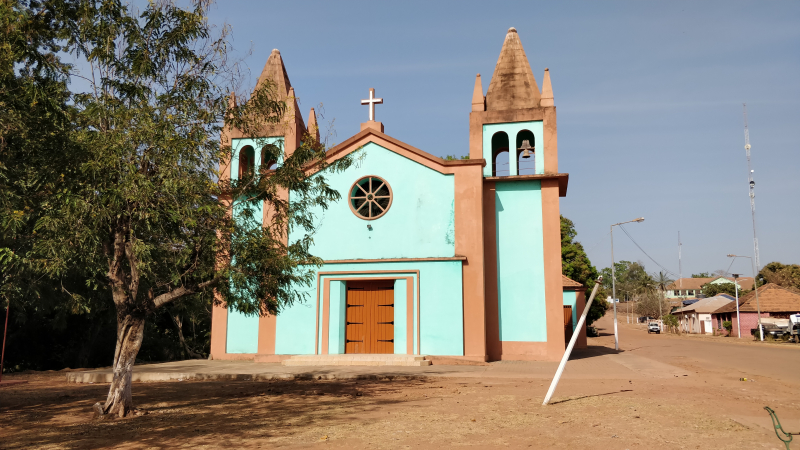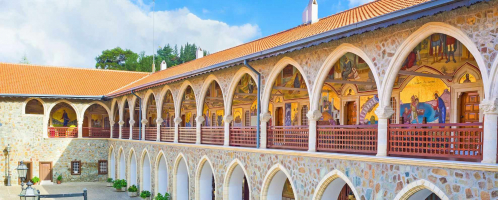Top 8 Guinea-Bissau Culture, Customs and Etiquette
Guinea-Bissau, officially known as the Republic of Guinea-Bissau, is a nation in western Africa. With a population of roughly 1,815,698, the nation has a total ... read more...area of about 13,948 square miles. Bissau serves as both the nation's capital and largest city. Since it was formerly a Portuguese colony, the nation has had a fascinating history. Here are some things to know about the Guinea-Bissau Culture, Customs and Etiquette.
-
Muslims make up about 45% of the country's overall population, making Islam the largest practiced religion in Guinea-Bissau. In the nation, 31% of people are traditional African believers, compared to 22% of Christians. Contrary to popular opinion, the majority of Guinea-Muslims Bissau and Christians practice their religion in a way that draws on the beliefs of the native African people. The majority of Guinea-population Bissau is Christian in the coastal and southern regions, while Muslims are concentrated in the country's eastern and northern regions. In all regions of the country except the north, there are people who adhere to traditional African beliefs.
In Guinea-Bissau Culture, the choice of religion is free Guinea-Constitution Bissau grants its people the freedom to follow any religion they want. Foreign missionaries are likewise free to carry out their work in the nation without any restrictions. These rights guaranteed by the constitution are largely respected by the government.

plataformamedia.com 
wikimedia.org -
The ancestors' knowledge is passed down from one generation to the next. People have created their own civilizations and personal clothing rules since the beginning of time. An energetic and powerful people with roughly 300,000 members, the Manjak can be found all over Africa. In fact, they can be found in Ethiopia, Cape Verde, Senegal, Gambia, and the country of origin of the Mandjak, Guinea-Bissau. They are skilled artisans who have always worked in the field of cloth weaving.
Cotton fabric made by hand on a loom is known as manjak. The loincloth Manjak, also known as "Bléénj," is of unmatched beauty since it is thick, soft, and supple. According to folklore, a Manjak man from the village of Kalekis learned to weave from a spirit. It is worn for major ceremonies, such as a wedding, birth, baptism, or funeral. Men and women each tie their own loincloth around their waists, precisely. This cloth is worn in various ways depending on where it is from. Age also affects the colors and patterns. They also each have their own meanings.

riccimedia.com 
riccimedia.com -
In Guinea-Bissau, there are numerous traditional African sports, but wrestling is one of the oldest and most well-liked. It is typical in villages and used for rites of passage and martial arts training. Everywhere throughout the nation, ouri, an African board game that predates backgammon, is played. The most popular Western sport in Guinea-Bissau is football (soccer). The nation has a number of clubs, and its football association has belonged to the Fédération Internationale de Football Association since 1986. (FIFA).
In addition, basketball has gained popularity; the national federation is connected to the International Basketball Federation. The nation's islands are famous for swimming and diving, while the rivers and coastal areas offer great fishing opportunities. The International Olympic Committee granted recognition to Guinea-national Bissau's Olympic committee in 1995 after it was founded in 1992. At the Atlanta Summer Olympics in 1996, the nation participated in wrestling competitions for the first time.

fjrmendes.com 
sportsbrief.com -
Guinea-Bissau, a country on Africa's west coast along the Atlantic Ocean, is known for its Bissau-Guinean cuisine. In the interior, millet is a common food, while rice is a staple in the diets of those who live close to the coast. Due in great part to coups, corruption, and inflation, a major portion of the rice is imported, and food insecurity is a problem. To be exported, cashews are farmed. They also grow olives, coconuts, and palm nuts.
In Guinea-Bissau culture, along with cereal grains, milk, curd, and whey, people frequently eat fruit, vegetables, fish, shellfish, and dairy products. The Portuguese promoted the production of peanuts. Additionally planted are Vigna subterranea (Bambara groundnut) and Macrotyloma geocarpum (Hausa groundnut). Also included in the diet are black-eyed peas. It is harvested palm oil. Soups and stews are common dishes. Yams, sweet potatoes, cassava, onions, tomatoes, and plantains are typical components. Aframomum melegueta seeds are used in cooking along with other spices, peppers, and chilis (Guinea pepper).

tasteatlas.com 
thetravelhackinglife.com -
The polyrhythmic gumbe genre, which is the main musical export of Guinea-Bissau, is most frequently linked with its music. Other well-liked genres include tinga and tinga. The tinga and tinga genres are also very popular. Although the term "gumbe" is occasionally used to refer to any type of music from the nation, it actually refers to a particular style that combines roughly 10 different folk music traditions. Similar to the Jola akonting but with the short drone string at the bottom as opposed to the top, the Balanta plays a gourd lute called a kusunde. The center string, which is the longest, is stopped by the top string and sounds identical while the top string is of medium length.
The ceremonial music played during funerals, initiations, and other rites, as well as Balanta brosca and kussundé, Mandinga djambadon, and the kundere sound of the Bijagos islands are examples of extensive folk traditions. The major musical instrument of Guinea-Bissau is the calabash, which is utilized in exceptionally fast-paced and rhythmically intricate dancing music.

wikipedia.org 
theafricaculture.com -
In Guinea-Bissau, in the coastal region, where the population once lived under the dual pressure of immigration from neighboring nations and European slave traffickers, people still reside in close-knit farms with spacious homes where nearly everyone, including the cattle, resides under the same roof. The interior of the house is made out of thick clay walls, clay ceilings, and a thatched roof. There are also ring yards with a covered porch and a water tank that gathers rainwater from the roof on the farthest islands.
Homes built by the fulani and malinke further inland are lighter and simpler because they employ grass and bamboo for the walls and ceilings. These homes are simple to knock down and build back up again when inhabitants in Guinea-Bissau move about with their animals. The savannah is covered in grass, while the following village receives piles and beams. A unique style of dwelling invented by the Fulani is made of a circular bamboo basket that is afterwards covered in clay. A bamboo fence surrounds the yard, which is made up of numerous of these homes.

wikivoyage.org 
commons.wikimedia.org -
The style of life of the Guinea-Bissau people has been affected by both traditional and modern ideals. However, other practices, including rural marriage, have remained customary. In Guinea-Bissau culture, people think that because males marry later than women, the groom must pay the bride price. While the number of intercultural marriages has historically been low, it has risen rapidly. These views have been impacted by modernity, as shown by the fact that young people are now entering marriage agreements without adhering to traditions. Traditional beliefs are mostly relevant in situations where men are the only ones permitted to own land, such as inheritance.
Guinea-Bissau people are also embracing contemporary healthcare and education systems instead of outdated ones. For instance, in order to further raise the levels of literacy, the government has been able to increase the number of educational institutions. Unfortunately, the majority of people must travel abroad for additional education because they are typically insufficient. Most of the handful that do not return home once their studies are complete.
youtube.com 
westend61.de -
Everywhere in the country, Guinea-Bissau people celebrate holidays and festivals. While the majority of them focus on music and art, others also celebrate the nation's history and religion. The majority of these events have flexible schedules. Muslims in the nation celebrate customs including Ramadan fasting, Eid Al-Fitr, Eid Al-Adha, and other Islamic holidays, just like Muslims in every other Muslim nation in the world. Eid Al-Fitr, which commemorates the conclusion of Ramadan, and Eid Al-Adha, which honors the Feast of Sacrifice, are two different holidays. Popular holidays like Easter and Christmas are celebrated by Christians.
Festivals of music and art include events like the Festival de Bubaque, which honors regional music. This festival typically has a different date each year, yet it still draws people from all around the country. The Guinea-Bissau Carnival, which showcases things like ethnic traditions and Guinean talent, is another festival dedicated to the arts. This event takes place during Easter and lasts about four days.

transafrica.biz 
transafrica.biz





























